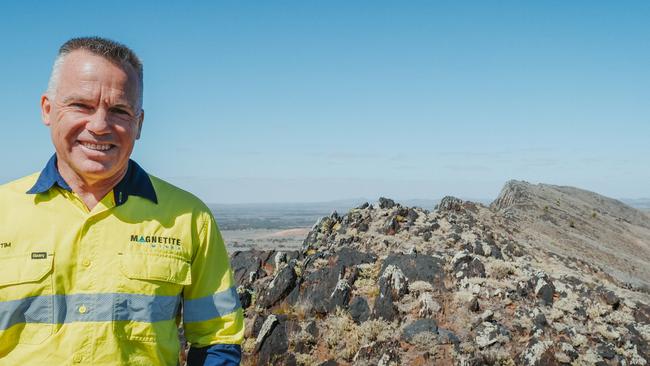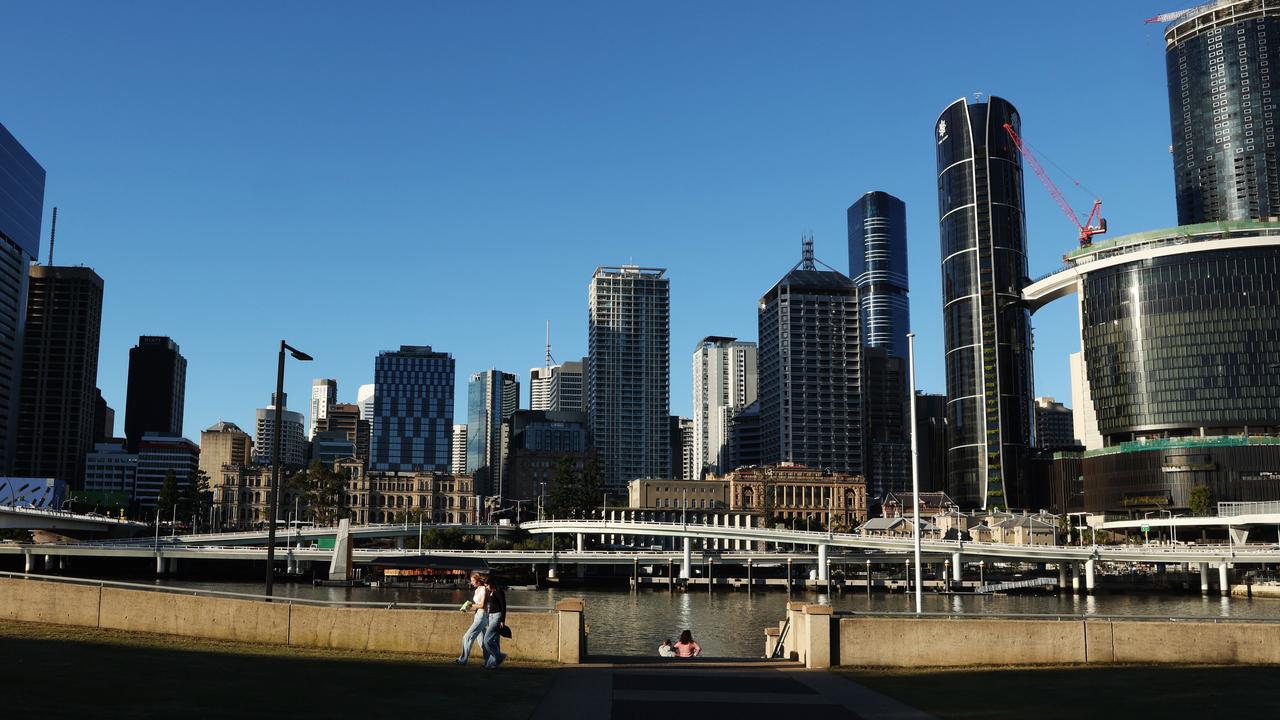Magnetite Mines says the nation needs to set green steel targets
Magnetite Mines says the nation needs to set targets and fund a green iron centre of excellence to ensure the sector realises its potential.

Business
Don't miss out on the headlines from Business. Followed categories will be added to My News.
Magnetite Mines says Australia should set up a Green Iron Centre of Excellence and set a goal of producing at least 10 million tonnes of export-quality green iron by 2035.
In the company’s submission to the federal government’s green metals consultation paper, it argues that the absence of domestic facilities to test and demonstrate the production of Australian green iron is a significant barrier to getting the industry going.
Chief executive Tim Dobson says the global industry has a “carbon problem’’ which the emerging Australian green steel sector can help address.
“However, we are not the only nation eyeing this opportunity, and Australia must act now to seize the opportunity to produce green iron if it is to secure the massive economic, environmental and regional community benefits possible by being a first-mover in this industry,’’ Mr Dobson said.
Magnetite Mines is working to develop its Razorback iron ore project in eastern South Australia, where it has a resource of six billion tonnes of magnetite ore.
“The Razorback Iron Ore Project will produce high-value direct reduction grade
concentrates, suitable for green iron production, and is set to become a very long-life project with expansion optionality in a tier one jurisdiction that will produce a superior iron ore product sought by steelmakers globally,’’ the company says.
“Magnetite Mines’ primary recommendation for the consultation paper is that Australia must act soon because time is running out.
“While Australia does not today have a green iron industry, it has two comparative advantages: abundant magnetite deposits and substantial renewable energy resources for producing green hydrogen, both commodities being essential to produce green iron.’’
Magnetite Mines is recommending a three step pathway for the sector, starting with the immediate development of a green iron strategy and funding for a centre of excellence.
Secondly, the company envisages production starting “in the form of an expandable-scale green iron facility with the support of national and state government policies and infrastructure support’’.
The third step was to scale up, aiming for 5Mtpa of green iron by 2030 and 10Mtpa by 2035.
Magnetite Mines says using the hydrogen produced from that also emerging sector, produced using renewable energy, would enable the production of direct reduced iron or hot-briquetted iron for export.
Such a product “is forecast to be in increasingly high demand by our key trading partners,
including Japan, Korea and Taiwan, but also by China, India and other steel producing Asian countries’’ the company says.
“Each of these countries and their steelmakers have made decarbonisation commitments and are actively seeking green iron supply chains to help meet those commitments.
“By 2030, demand for DR-grade pellets is expected to reach between 80-100 million tonnes per year.
“McKinsey, Wood Mackenzie and the International Iron and Metallics Association have all
predicted that, based on current trends and the long lead times for iron ore projects, supply will fail to reach the projected level of demand, creating a significant deficit.
“Wood Mackenzie has also estimated a five-fold increase in high-grade iron ore demand by 2050 and a potential supply shortfall of approximately 350 million tonnes per annum.’’
The submission says several countries in the Middle East could emerge as competitors, having already accelerated plans for their own green iron industries, off the back of abundant, cheap natural gas, which would be a transition fuel before moving to green hydrogen.
Magnetite Mines is also arguing for the inclusion of magnetite or high-purity iron ore on the nation’s critical minerals or strategic materials list “signalling the government’s intention to support new production’’.
It would also like to see subsidies or supportive tax policies for the sector, and “The identification and financial support from Federal and State Governments for key common
user infrastructure required to be developed to support the industry including transport (port and rail), renewable power and water’’.
Originally published as Magnetite Mines says the nation needs to set green steel targets



